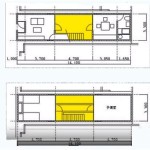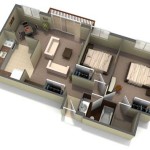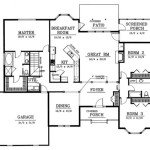Essential Aspects of a Sketch Plan for a Small House
A sketch plan is a crucial step in designing and building a small house. It provides a detailed outline of the house's layout, dimensions, and essential features. Creating a well-thought-out sketch plan ensures that the construction process runs smoothly and that the final house meets your specific needs and preferences.
When drafting a sketch plan for a small house, it is important to consider several key aspects:
1. Site Selection and Orientation
The location of your house on the property plays a significant role in its functionality and aesthetics. Choose a site that maximizes natural light, minimizes noise, and offers desirable views. Consider the orientation of the house in relation to the sun to optimize energy efficiency.
2. Floor Plan
The floor plan is the blueprint of the house's interior layout. Plan the arrangement of rooms, hallways, and staircases carefully to create a functional and comfortable living space. Consider the flow of traffic and the relationships between different spaces.
3. Dimensions and Scale
Accurately measure and record the dimensions of all rooms and spaces. Use a scale to ensure that the proportions are correct and that furniture and appliances can fit comfortably. This information is essential for contractors and engineers during the construction phase.
4. Architectural Features
Sketch the exterior features of the house, including the roofline, windows, doors, and any ornamentation. Note the materials and finishes you envision, such as siding, trim, and paint colors. These details will define the overall character and style of the house.
5. Room Functions and Adjacencies
Consider the intended use of each room and plan their placement accordingly. Group related rooms, such as the kitchen, dining room, and living room, to facilitate easy flow. Ensure that private spaces, such as bedrooms and bathrooms, have adequate privacy.
6. Utilities and Infrastructure
Indicate the location of essential utilities, such as electrical fixtures, plumbing, and HVAC systems. Plan for sufficient outlets, plumbing fixtures, and ductwork to meet your household's needs. Also, consider the placement of appliances and equipment.
7. Outdoor Spaces
Don't neglect the importance of outdoor spaces. Sketch the location and size of patios, porches, decks, and gardens. These areas extend the living space and provide opportunities for relaxation and entertainment.
8. Structural Considerations
While a sketch plan is not a detailed structural drawing, it is important to consider the basic structural elements of the house. Indicate the location of walls, beams, and columns. Ensure that the design is structurally sound and meets building codes.
9. Budget and Timeline
Keep your budget and timeline in mind when creating a sketch plan. Choose materials and features that align with your financial constraints. Plan the construction process realistically, allowing for potential delays and unforeseen circumstances.
10. Review and Revision
Once you have a draft sketch plan, take some time to review it carefully. Consider feedback from family members, friends, or professionals. Make necessary revisions to optimize the design and address any potential issues before finalizing the plan.
By following these essential aspects, you can create a comprehensive sketch plan that serves as a solid foundation for the design and construction of your small house. A well-planned sketch plan will help you visualize your dream home, avoid costly mistakes, and ensure a successful building experience.

Small House Floor Plan Sketches By Robert Olson Sketch Plans

Small House Plans Popular Designs Layouts

Small House Design 2024005 Pinoy Eplans Modern Plans Floor

Small House Design 2024001 Pinoy Eplans Floor Plans

Small House Plan Ideas To See More Visit Design Plans Little

Design For A Small Town House Sketch Plan Riba Pix

Small House Design Shd 2024007 Pinoy Eplans One Y Bungalow Plans Floor

Small House Plans Popular Designs Layouts

Floor Plan Easy Example Simple Plans Design

Simple 2 Y House Design With Floor Plan 32 X40 4 Bed Plans








